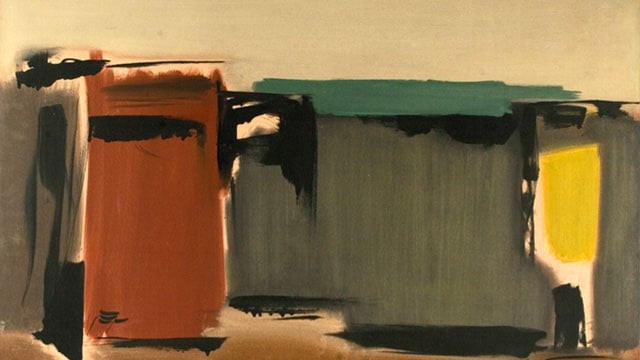US delivers art to Iran that had been impounded since 1979
Neither side portrayed the art delivery as having anything to do with any possible broader reconciliation

Sohrab Sepehri, Untitled, late 1960s. PHOTO: SOTHEBYS
Delivery of the art, described by American officials as architectural drawings bought in 1978 by the Tehran Museum of Contemporary Art, came against the backdrop of a slightly improved atmosphere in the estranged ties between Iran and the United States since the agreement resolving Iran’s disputed nuclear work was reached in July.
But neither side portrayed the art delivery as having anything to do with any possible broader reconciliation. Iran’s government, which took the unusual step of announcing the delivery, portrayed it as a partial vindication of a much deeper historical grievance with the United States over impounded property.
American officials, who appeared to have been taken by surprise at the Iranian announcement, said the art delivery was the outcome of a claim filed by the Iranians two years ago with a tribunal created in 1981 under an agreement known as the Algiers Accords.
That tribunal, based in The Hague, created a mechanism for Iranians and Americans to seek impounded assets from each other’s country after the 1979 revolution and the break in diplomatic ties that followed the Iranian seizure of the United States Embassy in Tehran, where 52 American hostages were held for 444 days.
Iran’s official Islamic Republic News Agency, which broke the news of the art delivery, made no mention of when the Iranians had first filed a claim with the tribunal, saying only that “following the Islamic Revolution and the takeover of the US Embassy in Tehran, the US government refrained to deliver them to Iran.”
The agency’s report on its English-language website said the art had been “taken back to the country after 37 years as part of its blocked proprietary interests.”
The Persian-language version of the agency’s report identified 10 of the pieces as having been drawn by Michael Graves and four by Robert A. M. Stern, both of them highly acclaimed American architects.
Graves, who designed more than 350 buildings around the world, died at 80 in March. Stern, who among other titles is dean of Yale’s architecture school, did not immediately return phone and email messages.
The precise subject matter of their drawings was not clear, nor was their value.
A State Department official, who spoke on the condition of anonymity because Iran relations are diplomatically delicate, confirmed that “a claim was brought before the tribunal related to various pieces of artwork Iran contracted to purchase prior to 1979.” That claim, the official said, “has now been resolved and the specific pieces of artwork have been transferred to Iran.”
The official said the transfer had been completed “in the last couple of months.”
This article originally appeared on the New York Times, a partner of The Express Tribune.



















COMMENTS
Comments are moderated and generally will be posted if they are on-topic and not abusive.
For more information, please see our Comments FAQ